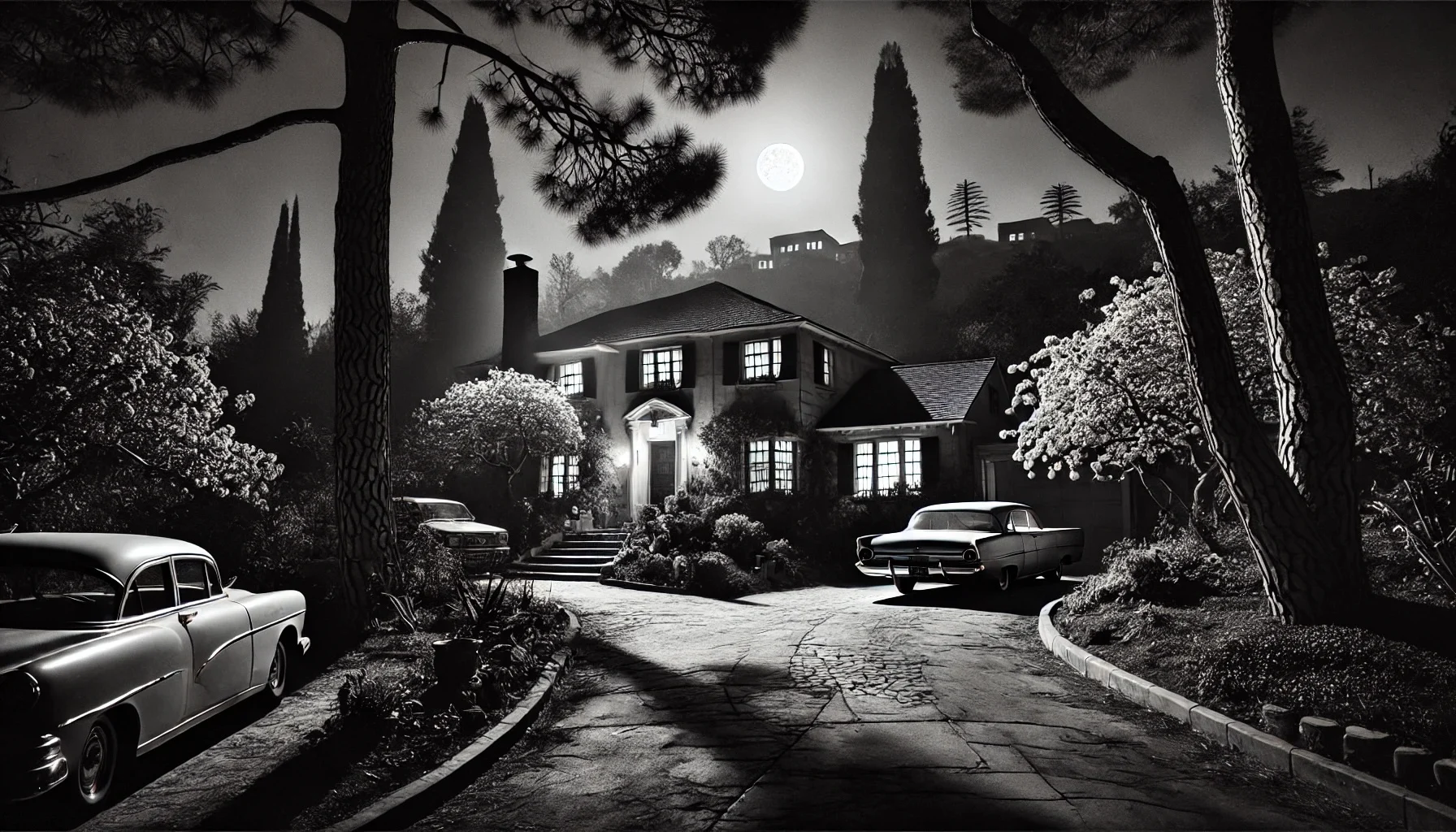
The Tate-LaBianca Murders
by: The Calamity Calendar Team
August 8, 1969
The Dark Night on Cielo Drive
On the night of August 8, 1969, the peaceful hills of Los Angeles were about to witness a horror that would forever change Hollywood. At the behest of their deranged leader, Charles Manson, four members of the “Manson Family” set out on a deadly mission. Tex Watson, Susan Atkins, Patricia Krenwinkel, and Linda Kasabian drove towards 10050 Cielo Drive, the home of the famous actress Sharon Tate and her husband, director Roman Polanski.
Manson had indoctrinated his followers with a bizarre belief in an impending apocalyptic race war he dubbed “Helter Skelter,” a term he misappropriated from a Beatles song. Convinced that they could spark this war through a series of gruesome killings, Manson sent his acolytes out to slaughter.
The Tate Murders
Just after midnight, the killers arrived at the secluded Cielo Drive residence. They encountered Steven Parent, a young man visiting the property’s caretaker, as he was leaving in his car. In a brutal and unprovoked act, Watson shot Parent dead. The group then infiltrated the home, rounding up its occupants: the radiant Sharon Tate, who was eight months pregnant, her friends Jay Sebring, Abigail Folger, and Wojciech Frykowski.
What followed was a scene of unimaginable horror. Watson, Krenwinkel, and Atkins unleashed a savage attack, using knives and guns to murder the terrified victims. The brutality was beyond comprehension. Susan Atkins used Sharon Tate’s blood to scrawl the word “PIG” on the front door, a ghastly signature to their night of terror.
Thanks for subscribing!
Another Night of Terror
Manson, unsatisfied with the chaotic outcome of the previous night’s carnage, decided to personally oversee the next attack. On the night of August 10, he led Tex Watson, Patricia Krenwinkel, and Leslie Van Houten to the home of Leno and Rosemary LaBianca. Manson tied up the couple before leaving, instructing his followers to complete the grisly task.
Watson, Krenwinkel, and Van Houten obeyed without hesitation. The LaBiancas were brutally stabbed to death, their blood used to write messages like “DEATH TO PIGS,” “RISE,” and a misspelled “HEALTER SKELTER” on the walls and refrigerator. The night echoed with the horrific echoes of murder, spreading fear and panic across Los Angeles.
The Aftermath
The city was left in shock. Seven lives were senselessly taken in two nights of unspeakable violence. The victims included the vibrant and promising Sharon Tate, Jay Sebring, Abigail Folger, Wojciech Frykowski, Steven Parent, and the unsuspecting couple Leno and Rosemary LaBianca. The property damage was minimal, but the psychological impact was immeasurable.
For days, the Los Angeles Police Department struggled to link the murders. It was only after Susan Atkins, already in custody for unrelated charges, bragged about the crimes to fellow inmates that the pieces began to fall into place. The police arrested Manson and his followers, bringing an end to their reign of terror.
Trials and Convictions
In 1971, Charles Manson, Tex Watson, Susan Atkins, Patricia Krenwinkel, and Leslie Van Houten were convicted of murder and conspiracy to commit murder. Initially sentenced to death, their sentences were commuted to life imprisonment after California abolished the death penalty in 1972.
The Manson Family trials captivated the nation, revealing a chilling blend of charismatic manipulation and mindless brutality. The legal proceedings prompted changes in parole policies, particularly for high-profile and violent offenders, ensuring that those capable of such heinous acts would remain behind bars.
Legacy and Continuing Fascination
The Tate-LaBianca murders left an indelible mark on American culture. They epitomized the sinister side of the 1960s counter-culture movement, shattering the era’s utopian dreams. Over the years, countless books, documentaries, and interviews have sought to understand the Manson Family’s motives and the psychological grip Manson held over his followers.
Today, the surviving perpetrators continue to face parole hearings, their cases drawing intense media scrutiny. The tragic events of August 1969 remain a stark reminder of the fragility of human decency in the face of manipulative evil, ensuring that the story of the Tate-LaBianca murders will not be forgotten.
Reflection on a Dark Chapter
The Tate-LaBianca murders are a sobering chapter in the annals of American crime. They serve as a grim reminder of the potential for violence that can lurk beneath the surface of seemingly peaceful times. As we reflect on these events, we honor the memories of the victims and strive to learn from the past, ensuring that such senseless violence is never repeated.
Stay in the Loop!
Become a Calamity Insider and get exclusive Calamity Calendar updates delivered straight to your inbox.
Thanks! You're now subscribed.